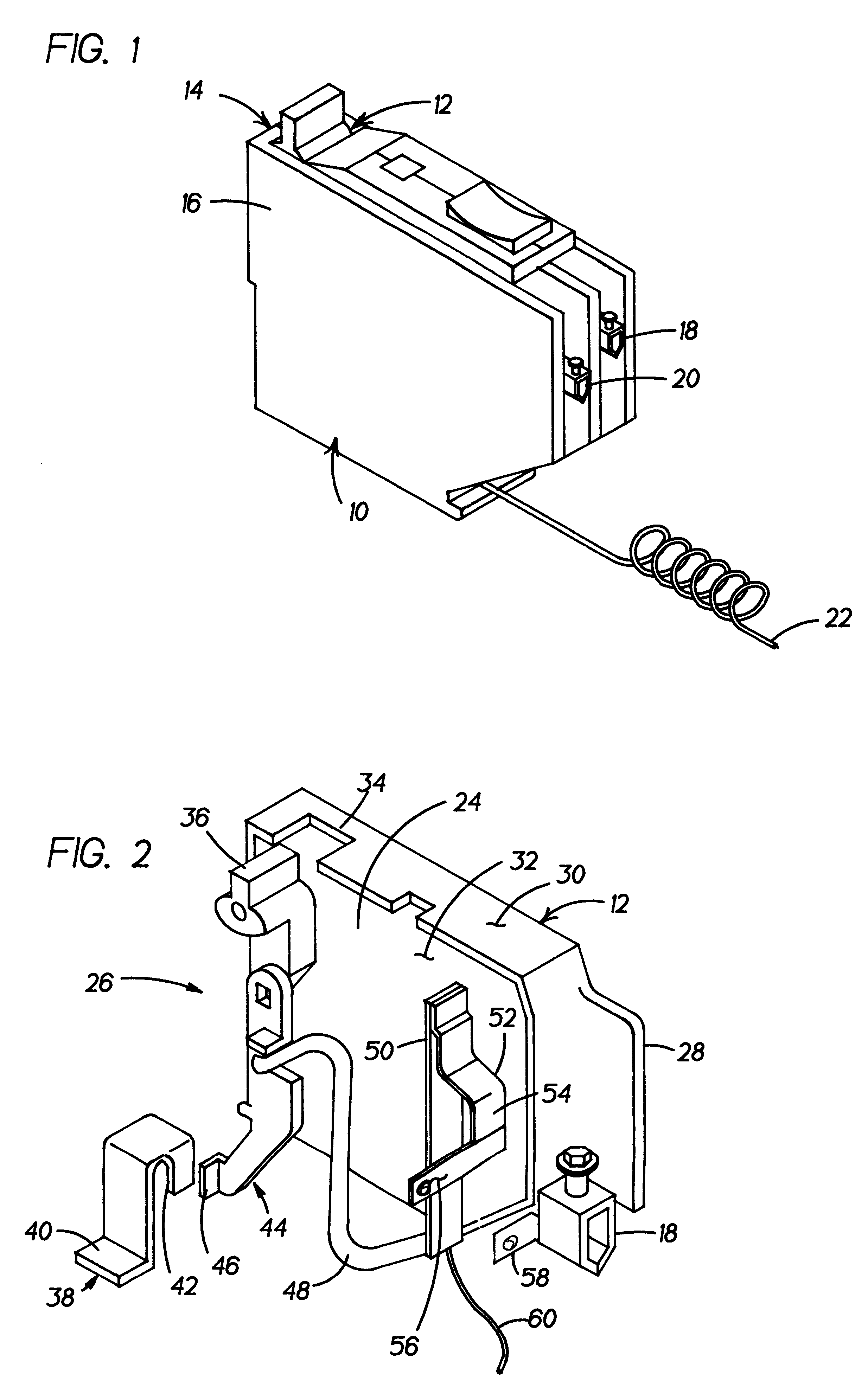Arc fault circuit breaker
a fault circuit and circuit breaker technology, applied in the field of circuit breakers, can solve the problems of bending the bimetal enough to throw it out of calibration, requiring a relatively large amount of space in an already cramped mechanical compartment, and requiring a large amount of spa
- Summary
- Abstract
- Description
- Claims
- Application Information
AI Technical Summary
Problems solved by technology
Method used
Image
Examples
Embodiment Construction
Referring to FIGS. 1, 2, and 3, an exemplary embodiment of a fully assembled, single pole, arc fault circuit breaker is shown generally at 10. Circuit breaker 10 comprises a first housing 12, a second housing 14, and a cover 16 that are assembled securely together with a plurality of permanent fasteners (not shown). First housing 12 defines a mechanical compartment 24, having load current carrying and switching components 26 disposed therein (see FIG. 2). Second housing 14 defines an electronics compartment 62, having current sensing components 72 and neutral current carrying components 74 disposed therein (see FIG. 3). A load current from a source (not shown) connects to line connection 38 (see FIG. 2), and conducts along the current carrying and switching components 26 to load lug 18 for customer connection to a load (not shown). A neutral current from the load connects to neutral lug 20 (see FIG. 3), and conducts along the neutral current carrying components 74 to neutral return ...
PUM
 Login to View More
Login to View More Abstract
Description
Claims
Application Information
 Login to View More
Login to View More - R&D
- Intellectual Property
- Life Sciences
- Materials
- Tech Scout
- Unparalleled Data Quality
- Higher Quality Content
- 60% Fewer Hallucinations
Browse by: Latest US Patents, China's latest patents, Technical Efficacy Thesaurus, Application Domain, Technology Topic, Popular Technical Reports.
© 2025 PatSnap. All rights reserved.Legal|Privacy policy|Modern Slavery Act Transparency Statement|Sitemap|About US| Contact US: help@patsnap.com



